Korean Scallion Pancakes (called Pajeon) are very easy to make appetizers, snacks, or side dishes for a Korean meal. Although there are many varieties of tasty jeon (Korean pancakes) one can enjoy, these made with fresh scallions are some of the most popular.
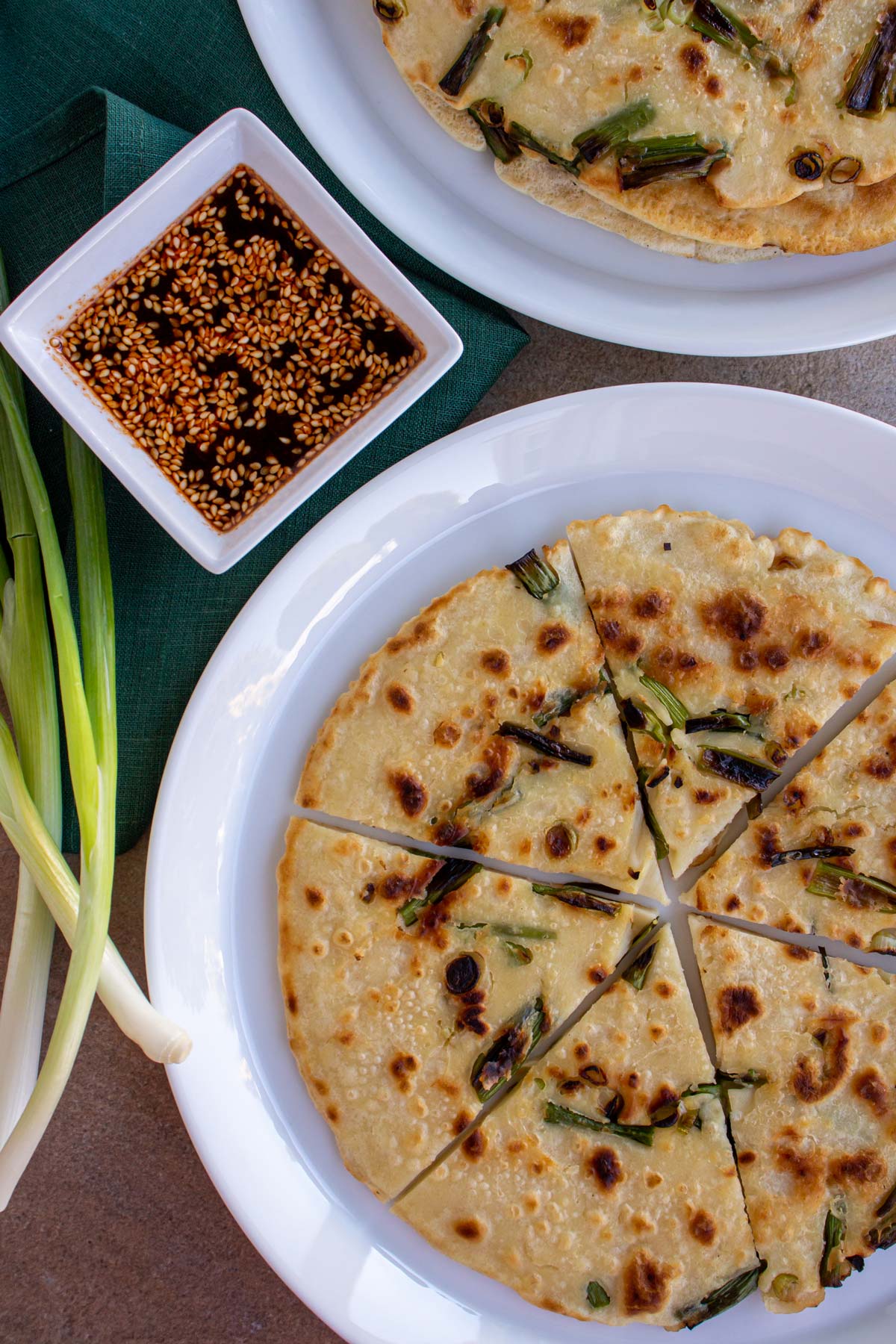
(This post was originally published in February 2018, but was updated with new photos and content in 2022).
The name Pajeon (파전 - pronounced PAA-jaan) comes from the Korean words pa meaning scallion, and jeon meaning pan-fried battered food, such as a fritter or pancake.
Pajeon are extremely popular in Korean cuisine, but don't confuse them with Cong You Bing or Chinese scallion pancakes. The Chinese variety of scallion pancakes are made with a dough, yielding a layered and flaky result that has a dense, crisp and chewy texture.
The Korean variety utilizes a pancake batter rather than a dough, and typically has much larger pieces of scallions within. The result is crisp on the outside but softer and more tender inside.
Korean pancake (jeon) variations
Although pajeon is considered the most popular type of pancake/fritter consumed in Korean cuisine, here are a few other jeon variations that are commonly enjoyed (although there are truly dozens and dozens):
- Kimchijeon (김치전): Made with kimchi
- Gamjajeon (감자전): Made with grated or pureed potatoes
- Haemuljeon (해물전): Made with a seafood mixture, such as shrimp, squid, and clams
- Guljeon (굴전): Made with oysters
Additionally, some pajeon versions also include seafood, although the scallions are still the most dominant feature.
Ingredient notes
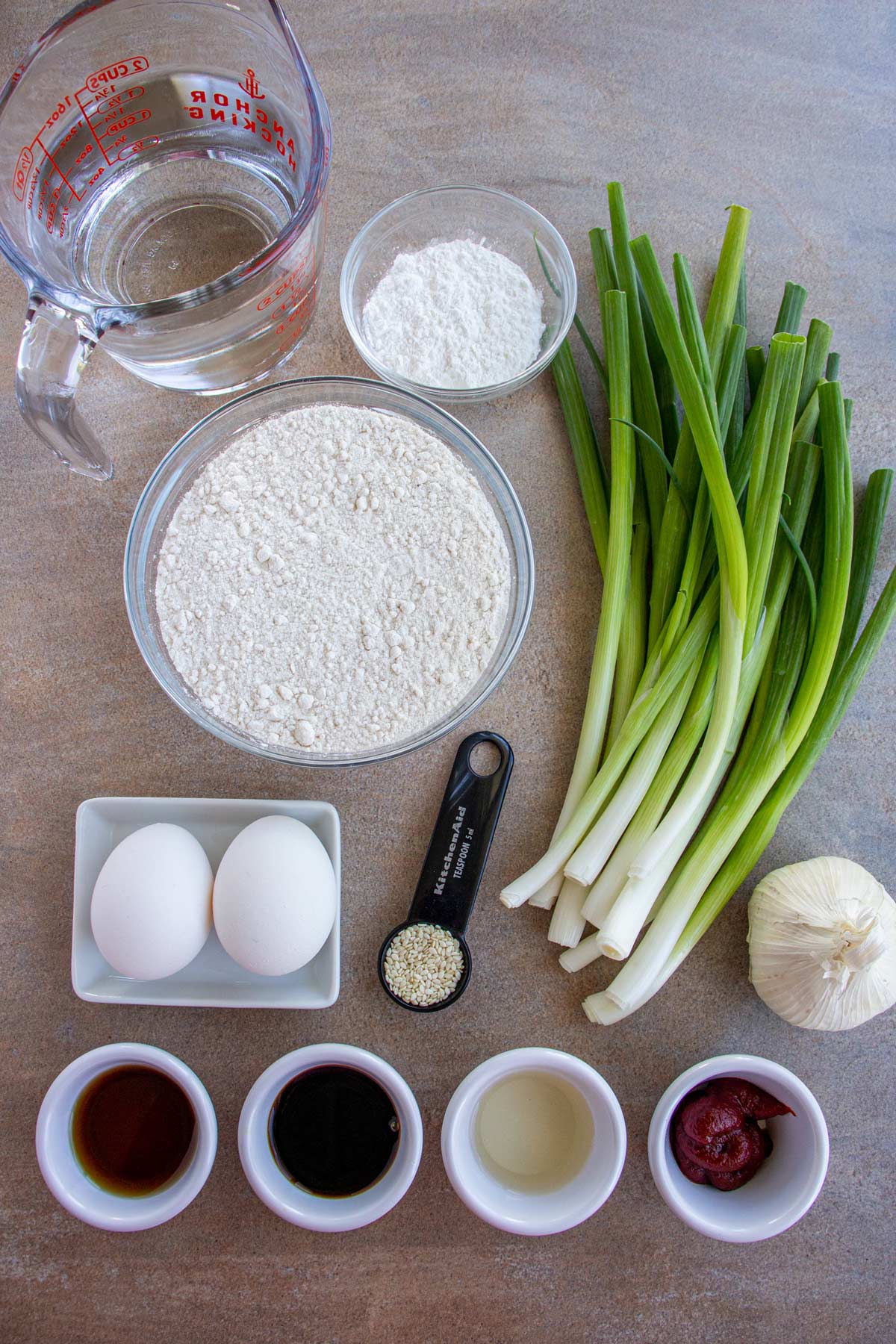
- Flour: Although you can certainly use Korean pancake mix to make these, I prefer to use more readily available ingredients that don't require a trip to a specialty market. Use plain all-purpose flour for these Korean scallion pancakes.
- Cornstarch: Include cornstarch in addition to the flour to help these pancakes get even crispier.
- Scallions: There isn't a hard and fast rule about what size to cut your scallions for Korean scallion pancakes. Some people leave them almost whole, others cut into 1 or 2-inch segments. I typically cut the white parts smaller (thinly slice) and then cut the remainder into 1-inch pieces to have a mix in sizes and textures. You can adjust the size to your preference but generally keep the pieces on the large side for these pancakes.
- Garlic: Garlic is not a traditional ingredient in pajeon, however I think it adds a bit more flavor to the batter and I like to include it. You can definitely omit it if you prefer to make these super traditional.
- Gochujang: Although these pancakes are lovely on their own, I think the dipping sauce really takes them to the next level and adds a lot more flavor. For the most part, its a basic soy sauce and rice vinegar based dipping sauce with a bit of toasted sesame oil and seeds. What really makes the sauce shine, however, is the addition of gochujang, or Korean chili paste. It adds a more complex flavor and, of course, a kick. Adjust the amount according to your preference, or omit it entirely if you don't do spicy.
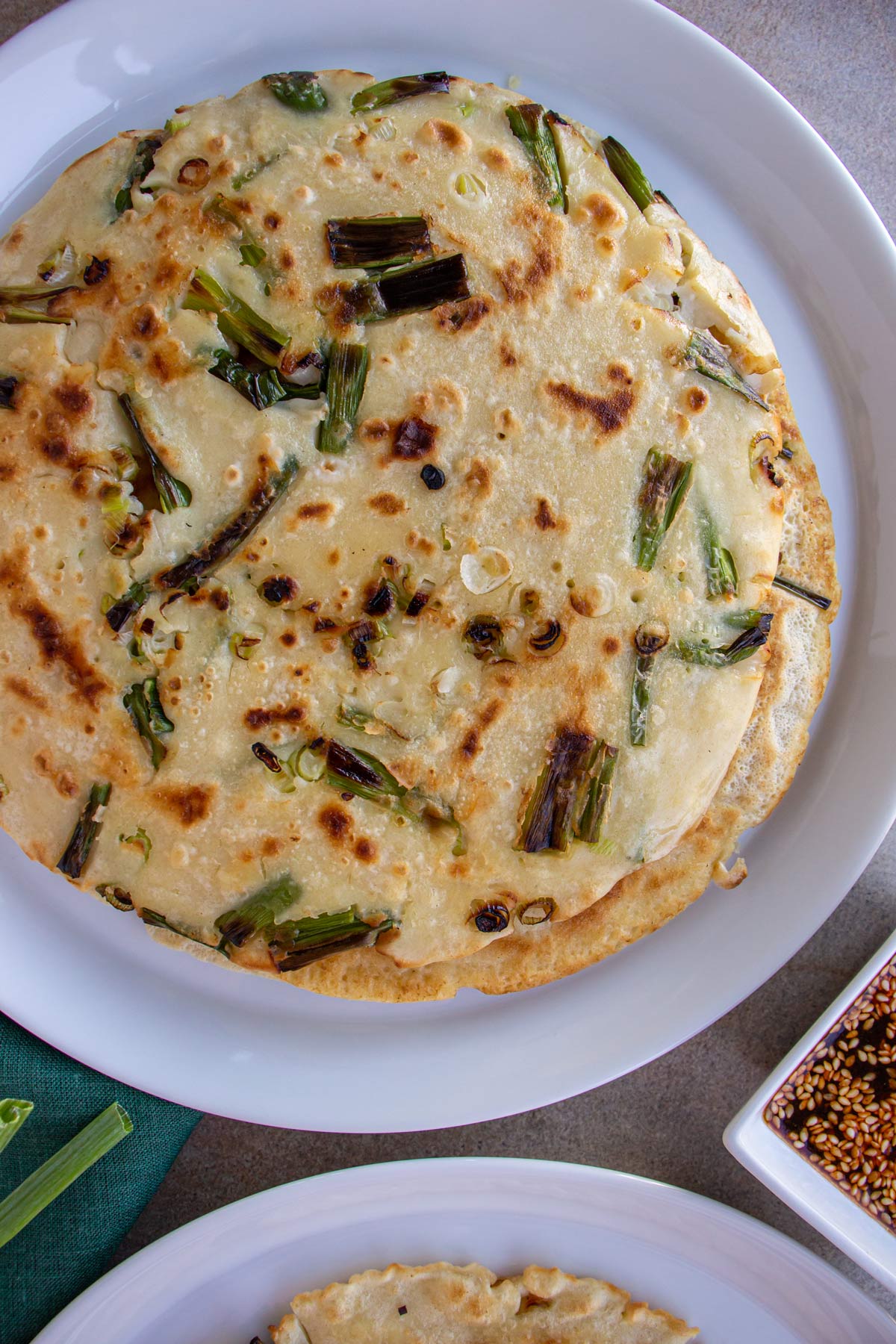
How to make it
First, make the dipping sauce. Whisk together soy sauce, water, rice vinegar, gochujang, toasted sesame oil and toasted sesame seeds in a small mixing bowl. Set aside at room temperature until ready to use.
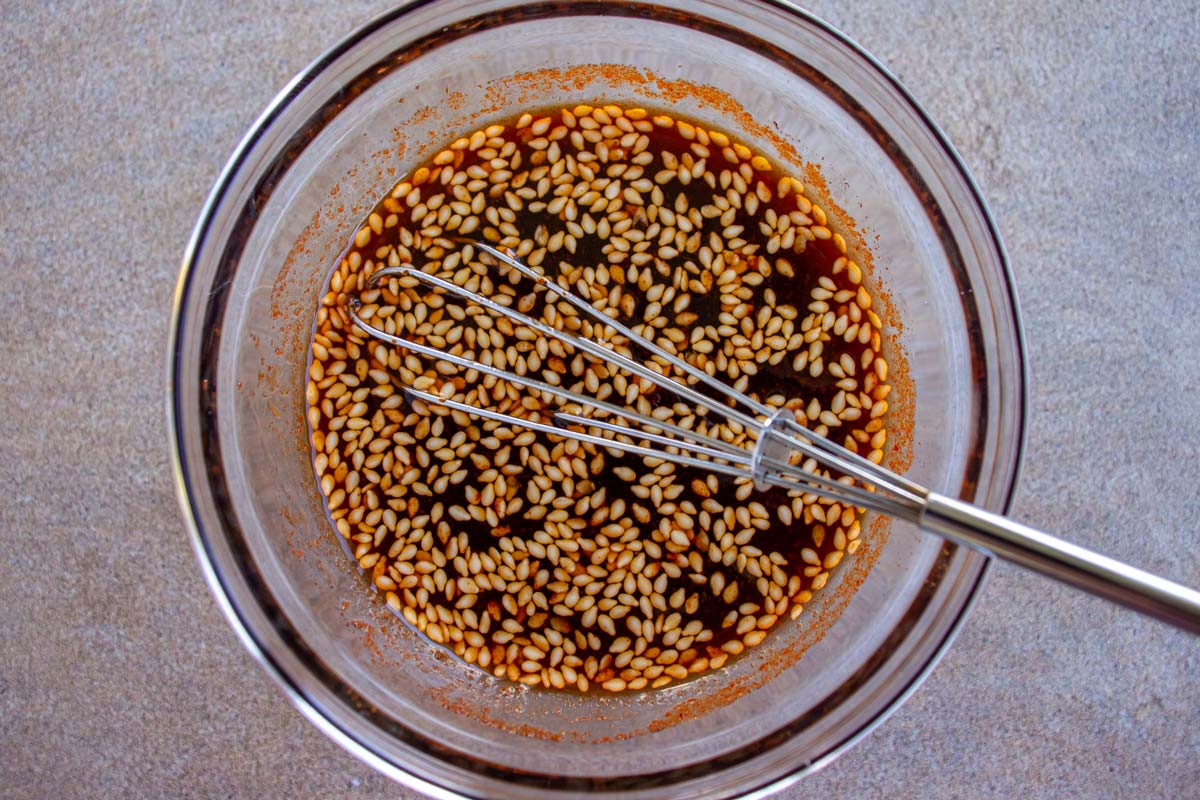
Next, make the pajeon batter. Combine flour, cornstarch, beaten eggs, water, garlic, and salt in a bowl and whisk until combined. Be careful not to over whisk.
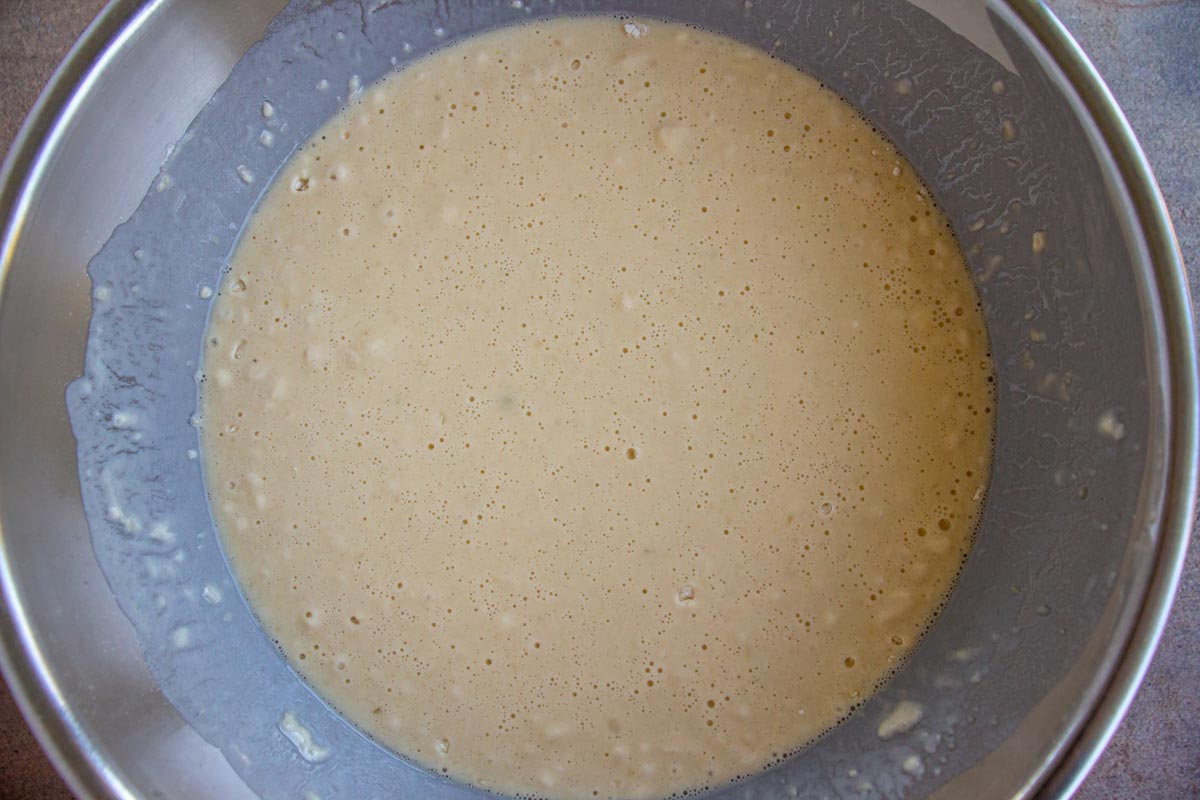
Refrigerate the batter for 10 to 15 minutes to allow it to chill and rest. Cold batter will yield crispier pajeon.
Take the batter out of the fridge and give it a quick whisk. Heat a thin coating of oil in a 10-inch non-stick skillet over medium to medium-high heat.
When the pan is hot, sprinkle a quarter of the scallions into the pan (PHOTO 1). Then pour in about a quarter of the batter (about ¾ cup) evenly over the scallions (PHOTO 2).
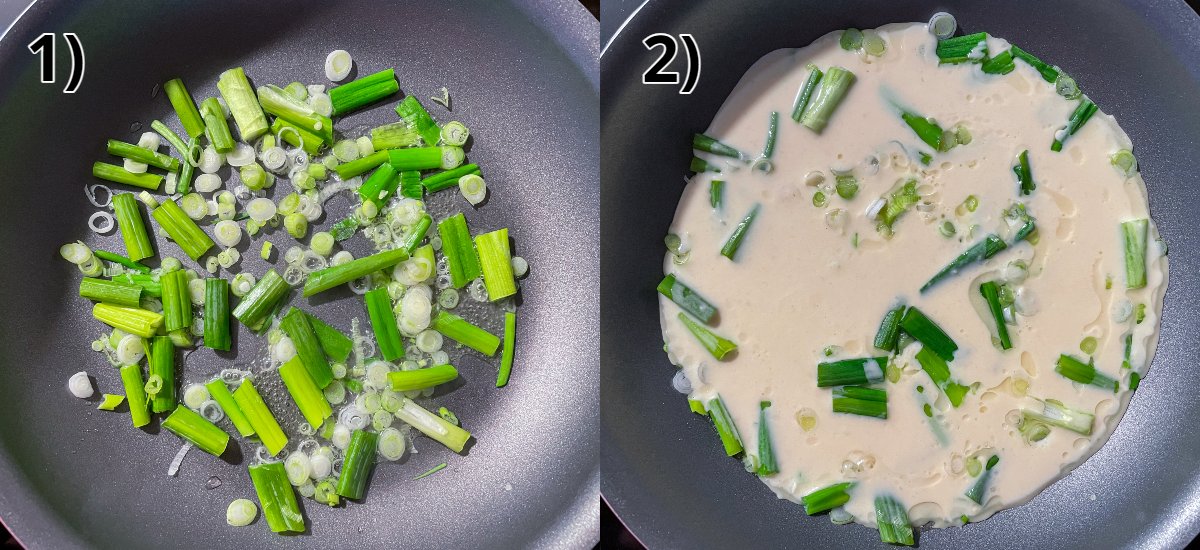
Cook on one side until the bottom is golden brown and the top is almost dry, about 4 to 6 minutes (PHOTO 3). Then flip over the pancake and cook on the other side until it is golden and blistered as well, about 2 to 3 minutes more (PHOTO 4). Add more oil if the pan seems dry and adjust the heat as needed.
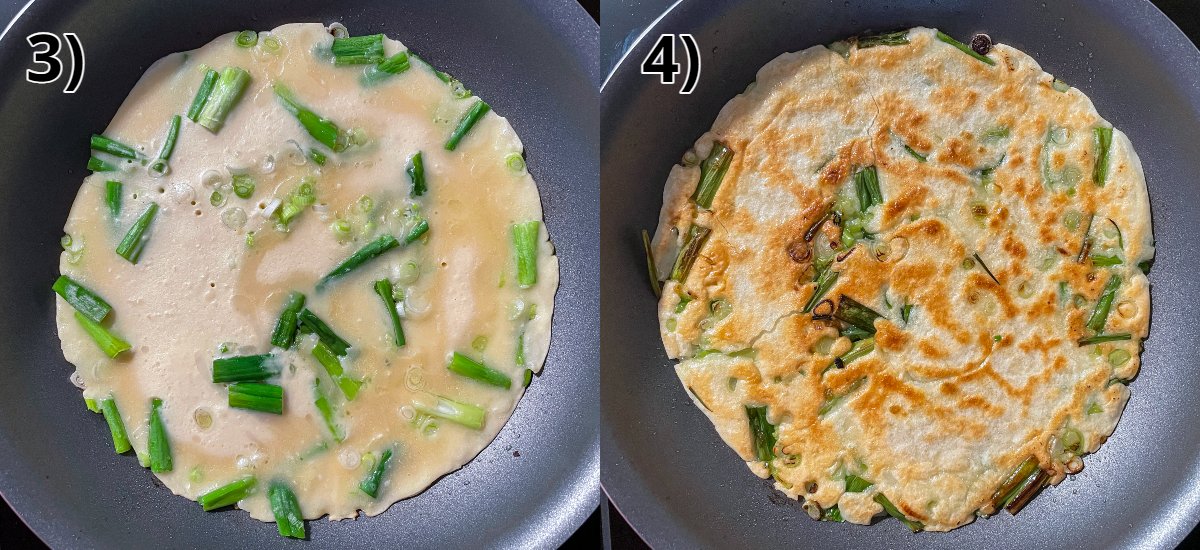
When the pancake is cooked through, and golden brown on both sides, remove to a paper towel-lined tray to blot some of the oil. Repeat with additional oil, and the remaining scallions and batter to make 3 more pajeon.
Cut each of the pancakes into 6 wedges or 9 squares, and serve immediately with dipping sauce.
Please scroll to the bottom of the post for the full recipe (in a printable recipe card) including ingredient amounts and detailed instructions.
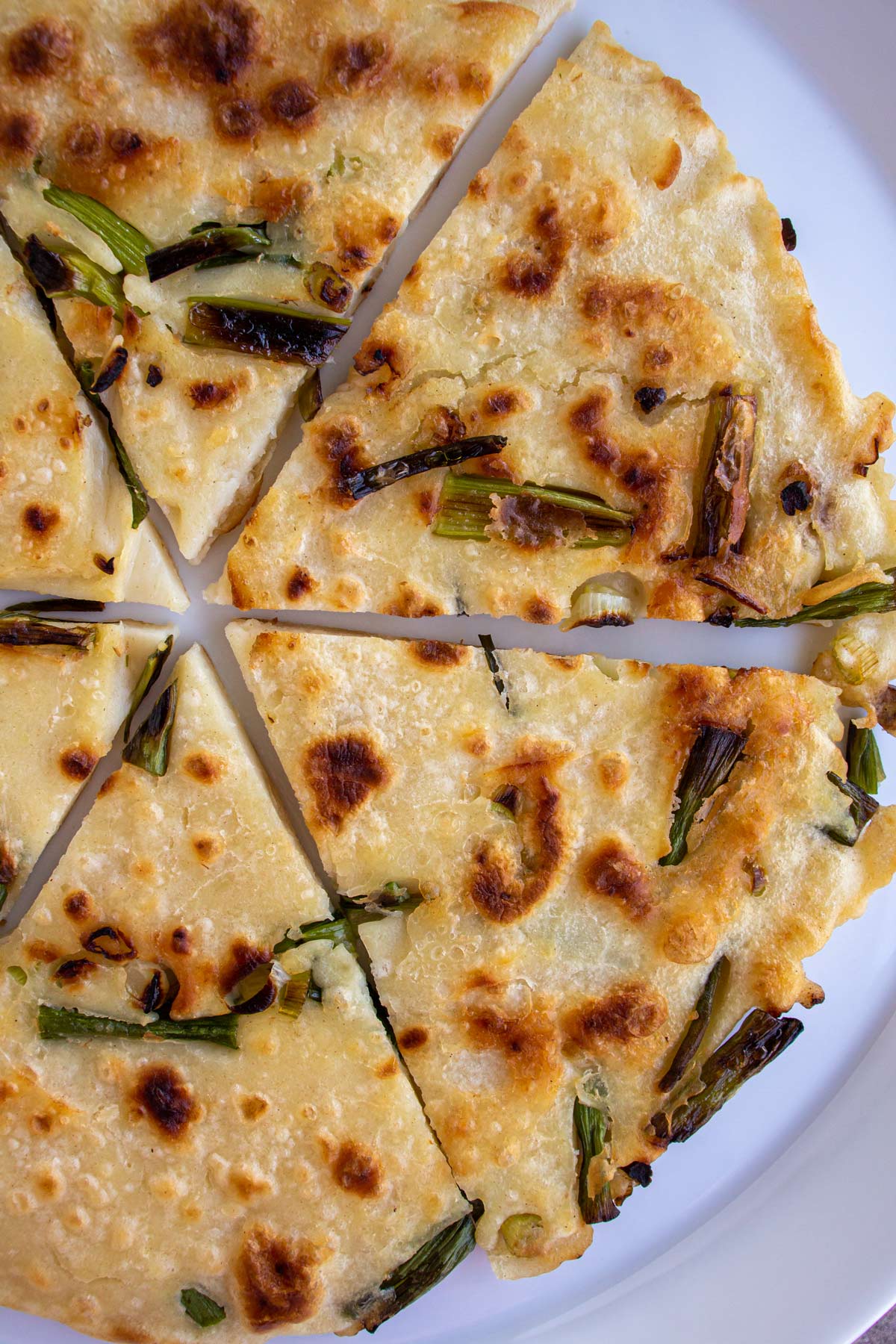
Expert tips and FAQ
Your batter may be a little lumpy at first, but don’t overmix. I find that after it rests in the fridge and the flour hydrates a bit more, the lumps are easier to whisk smooth.
Don’t skimp on the oil when cooking your Korean scallion pancakes. If the pan is too dry, they won’t get as crispy.
Adjust the heat level as needed when cooking your pajeon to ensure they cook evenly. If the heat is too high, your pajeon can burn; too low and they won’t crisp, and instead can end up soggy and greasy.
The temperature knobs on my range go from 1 to 9 and I cook my pajeon between 5 (right in the middle) and 6 (a tad closer to medium-high). I kept going back and forth between the two temperatures as needed as I monitor the cooking of my scallion pancakes.
You can refrigerate or even freeze leftover pajeon. Cool to room temperature first and then layer each pancake between pieces of parchment paper. Seal in a freezer safe Ziploc bag (if freezing or refrigerating) or an airtight container (if refrigerating). You can freeze these scallion pancakes for about 3 months. Thaw in the fridge before reheating.
To reheat leftover pajeon, place into a dry nonstick pan and heat over medium heat, flipping over halfway through, until both sides have crisped back up a bit and the pancake is hot and sizzling.
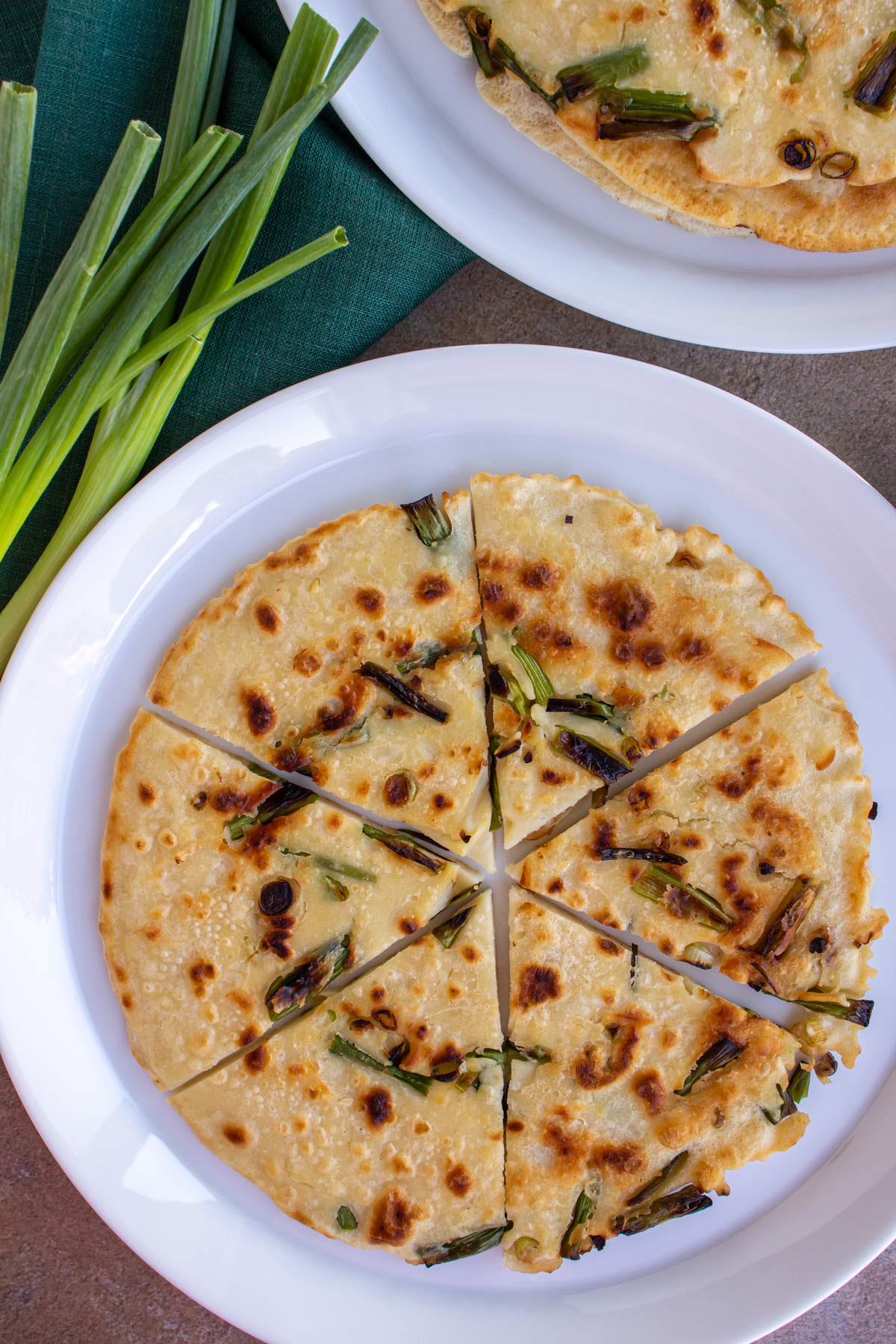
Other recipes you may like
- Chinese Scallion Pancakes (Cong You Bing)
- Ram-Don from Parasite (Jjapaguri with Steak)
- Japchae (Korean Sweet Potato Noodles with Meat and Vegetables)
- Korean Fried Chicken
Tried this recipe? Please leave a star ⭐️⭐️⭐️⭐️⭐️ rating in the recipe card below and/or a review in the comments section further down the page. You can also follow me on social media on Facebook, Instagram, and Pinterest!
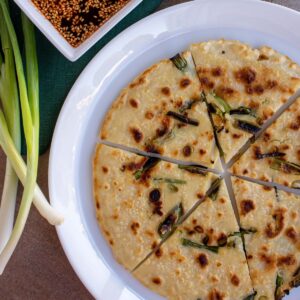
Pajeon (Korean Scallion Pancakes / 파전)
Ingredients
Dipping Sauce:
- 3 tablespoons soy sauce
- 1 tablespoon water
- 1 tablespoon unseasoned rice vinegar
- 1 teaspoon gochujang (Korean chili paste)
- 1 teaspoon toasted sesame seeds
- ½ teaspoon toasted sesame oil
Pajeon:
- 1 ¾ cups (228 grams) all-purpose flour
- ¼ cup (25 grams) cornstarch
- 2 large eggs beaten
- 2 cups ice cold water
- 1 teaspoon kosher salt
- 2 tablespoons vegetable oil or as needed for pan-frying
- 2 bunches scallions (about 12 scallions) white and light green parts thinly sliced, dark green parts cut into 1-inch pieces
Instructions
- To make the dipping sauce: Whisk together all the ingredients in a small mixing bowl and set aside at room temperature. To make ahead, refrigerate the mixture for up to 1 week. Bring back to room temperature before serving.
- To make the pajeon: Combine the flour, cornstarch, beaten eggs, water, garlic, and salt in a bowl and whisk until combined (be careful not to over whisk or your pancakes can become tough). The mixture should be a little thinner than American pancake batter. You should have about 3 ¼ cups of batter. Refrigerate the batter for 10 to 15 minutes to allow it to chill and rest. Cold batter will yield crispier pajeon.
- Take the batter out of the fridge and give it a quick whisk. Heat a thin coating of oil (about a ½ tablespoon or so) in a 10-inch non-stick skillet over medium to medium-high heat. When the pan is hot, arrange a quarter of the scallions in the pan, then pour in about a quarter of the batter (about ¾ cup) evenly over the scallions. The pajeon should be about 8 inches in diameter.
- Cook on one side until the bottom is golden brown and the top is almost dry, about 4 to 6 minutes. Then flip over the pancake and cook on the other side until it is golden and blistered as well, about 2 to 3 minutes more. Add more oil if the pan seems dry and adjust the heat as needed.
- When the pancake is cooked through, and golden brown on both sides, remove to a paper towel-lined tray to blot some of the oil. Repeat with additional oil, and the remaining scallions and batter to make 3 more pajeon.
- Cut each of the pancakes into 6 wedges or 9 squares, and serve immediately with dipping sauce.
Notes
- Your batter may be a little lumpy at first, but don’t overmix. I find that after it rests in the fridge and the flour hydrates a bit more, the lumps are easier to whisk smooth.
- Don’t skimp on the oil when cooking your Korean scallion pancakes. If the pan is too dry, they won’t get as crispy.
- Adjust the heat level as needed when cooking your pajeon to ensure they cook evenly. If the heat is too high, your pajeon can burn; too low and they won’t crisp, and instead can end up soggy and greasy.
- You can refrigerate or even freeze leftover pajeon. Cool to room temperature first and then layer each pancake between pieces of parchment paper. Seal in a freezer safe Ziploc bag (if freezing or refrigerating) or an airtight container (if refrigerating). You can freeze these scallion pancakes for about 3 months. Thaw in the fridge before reheating.
- To reheat leftover pajeon, place into a dry nonstick pan and heat over medium heat, flipping over halfway through, until both sides have crisped back up a bit and the pancake is hot and sizzling.
Nutrition
*All nutritional information is based on third-party calculations and should be considered estimates. Actual nutritional content will vary with brands used, measuring methods, portion sizes and more.*

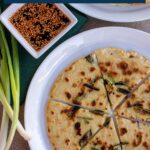
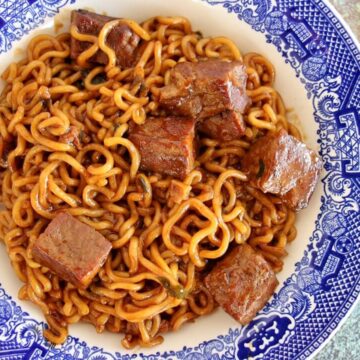
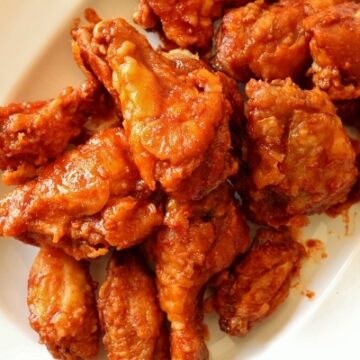
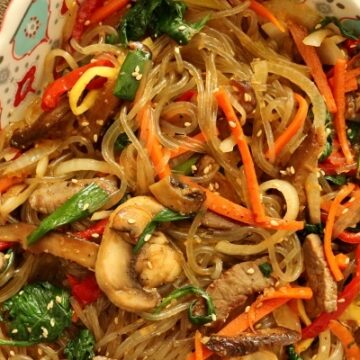
Comments
No Comments